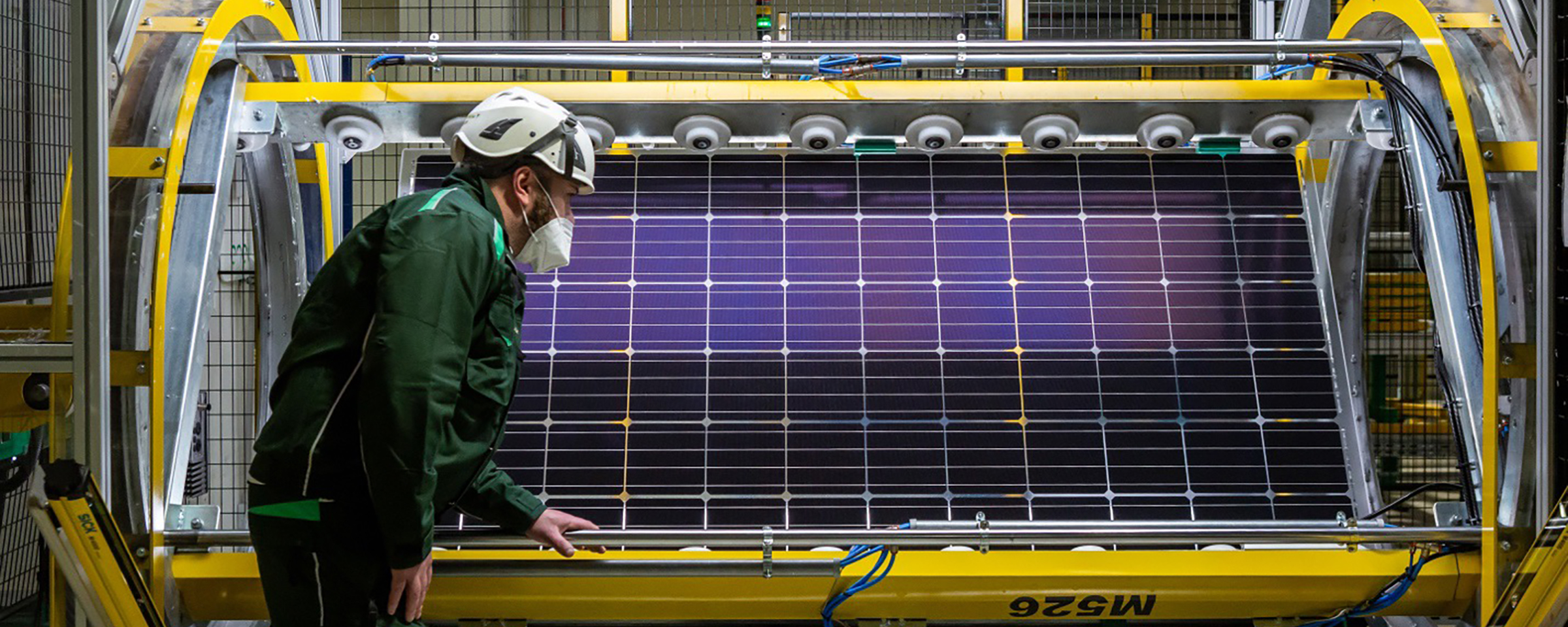12 06, 2022
{{ content.title }}
{{ content.description }}
Over the next decade, the Inflation Reduction Act will direct nearly $400 billion in federal funding to clean energy infrastructure and technologies. It follows passage last year of the Infrastructure Investment and Jobs Act (IIJA), which provided $7.5 billion for public EV charging, $7.75 billion for zero emission buses, $9.5 billion for clean hydrogen hubs, and additional modest federal authority for transmission line siting and permitting.
Taken together, these significant tax and financial incentives along with a decade of policy certainty, and a renewed focus on domestic manufacturing, will collectively transform the energy and transportation industries. In the coming decade, Americans stand to see more affordable electricity prices, a cleaner and more resilient grid, and broader adoption of electric vehicles (EVs).
Businesses, community leaders and workers not only have a big opportunity to take an active role in the energy transition, but also reap the benefits of doing so. Reducing carbon emissions and building a more climate-resilient country coast-to-coast will impact nearly every organization and citizen.
Accelerated growth of clean power
The Inflation Reduction Act is projected to accelerate clean energy deployment across the U.S., with a fivefold increase in solar growth rates and a twofold increase in wind over the next several years. And companies like Enel, which announced plans to invest $5 billion into the North American market, are joining the race to decarbonize the U.S. power infrastructure.
Decarbonizing our power sector means that electricity will be a cleaner power source and reduce U.S. reliance on volatile energy markets. The rapid transition to renewables is expected to drive down the price of renewable electricity and electric equipment, with retail costs of electricity expected to decline by up to 6.7% over the next decade. This opens greater opportunities for businesses to electrify their operations and take advantage of cleaner, cheaper and more reliable energy sources. It’s prime time for organizations to start incorporating Power Purchase Agreements and retail renewable energy as part of their sustainability programs.
Communities can also expect lower electricity costs — with the average household saving up to $220 annually — and improved air quality. Pollution affects everyone’s health, but low-income communities and communities of color have historically been most burdened with negative health impacts. This new law aims to deploy clean energy at scale while targeting areas most impacted by pollution. Reducing fossil fuel pollution is expected to decrease premature deaths by 3,900 and up to 100,000 asthma attacks annually by 2030.
For workers specifically, the law is expected to generate more than 9 million jobs across manufacturing, construction and tech over the next decade, particularly in fossil fuel communities and those most impacted by the energy transition. Tax incentives are five times larger for projects that meet prevailing wage and apprenticeship requirements, encouraging new well-paying jobs and training for the next generation of workers. But job seekers won’t need to wait 10 years to benefit from the industry’s momentum. For instance, Enel North America has increased its workforce by about 13% over the last year to support clean energy growth.
Influx of domestic manufacturing and supply chains
The Inflation Reduction Act is infusing billions in clean energy funding to transform our domestic manufacturing and supply chains.
Businesses across industries like agriculture, construction, and manufacturing have an opportunity to retool factories, ramp up production using low-carbon materials and install climate-smart equipment like integrated, distributed energy systems. For those purchasing large amounts of agricultural and industrial products, these steps to transform industries and supply chains could go a long way to reduce corporate value chain emissions. Companies can make a meaningful impact on emission reduction goals by addressing emissions across the entire value chain.
With incentives also centered around the equitable deployment of federal funds to communities across America, grants and tax bonuses can be used for everything from reducing pollution to upgrading factories that manufacture clean energy components in rural areas. For example, solar and wind production facilities placed in low-income communities can receive up to a 20% bonus on top of the original credit awarded, attracting greater investment to communities that need it. This robust support in the development and manufacturing of solar, wind, battery and electric vehicle components translates into hundreds of thousands of jobs across the country. And it gives countless communities a direct, tangible stake in the clean energy transition.

Clean manufacturing investments and the robust support for the development of American manufacturing of solar, wind, batteries, and EVs will increase demand for U.S. materials. This will help localize and grow American supply chains, creating more than 900,000 jobs over the next decade. One example of domestic growth already in motion is Enel’s proposed U.S. solar photovoltaic manufacturing facility, which is expected to begin operations in 2024 and create up to 1,500 new clean energy jobs.
Accessible and affordable electrified transport
The U.S. electric vehicle market is on the cusp of crossing the chasm to mass adoption. The IIJA and Inflation Reduction Act’s incentives for EVs and EV chargers promise to make them more affordable and encourage that shift to happen quicker than some may assume.
For businesses, it is estimated that electric fleet vehicles could cost 15% - 25% less than that of equivalent internal combustion engine vehicles by 2030 due to falling costs, widening availability and direct policy action. While EVs often require a higher upfront investment, companies adding multiple EVs and EV chargers may be eligible for tax credits, significantly lowering the cost of electrifying a fleet. And as technology advances, businesses should look for vehicle-grid integration opportunities, turning EVs’ electricity demand into flexible load and energy storage solutions.

As the U.S. government rolled out the Inflation Reduction Act, electric school buses emerged as an immediate opportunity to improve community well-being and expedite the broader transition to electric vehicles. With 95% of school buses in the U.S. running on diesel fuel, transitioning the entire fleet will significantly reduce schoolchildren’s emissions exposure.
Communities will also benefit from the bill’s proposed tax credits of up to $7,500 for people who purchase new EVs and $4,000 for buyers of used EVs. These incentives will help reduce the overall price tag in the medium term, making them more accessible to lower and middle-income American families.
The legislation aims to bring manufacturing jobs back to the U.S, while also creating an equitable shift to EVs with its tax credits. Clean vehicle manufacturing and the loans and grants to establish, expand or retool factories promises the delivery of nearly 80,000 jobs. As the U.S. looks to build an EV ecosystem from the ground up, companies are positioning themselves to supply a market set to boom. And the American worker is poised to benefit.
Reimagining business, communities, and jobs in the U.S.
As the energy transition continues and our energy infrastructure transforms, businesses, communities, and industries have a lot to gain from joining the clean, electrified economy. Enel North America has partnered with businesses and communities for decades to scale sustainability efforts and unlock new opportunities to maximize their clean energy investments. Explore more about Enel North America and our integrated solutions.